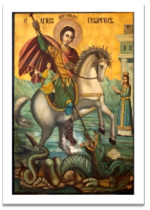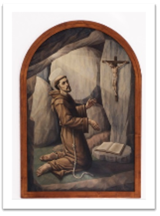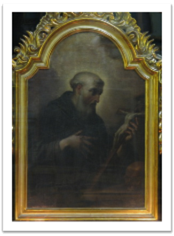
|
|

Below are excerpts taken from the Catholic Encyclopaedia 214 “
Under the term legend the modern concept would include every untrue tale… by the word legend, at the time when the concept arose, included both truth and fiction.
The legenda included facts which were historically genuine, as well as narrative which we now class as unhistorical legend.
Since the days of the martyrs, the Church recalled to mind her famous dead in the prayers of the Mass and in the Office, by commemorating the names noted in the martyrologies and making mention of incidents in their lives and martyrdom…
the stories of the saints were supplemented and embellished by the people according to their primitive theological conceptions and inclinations, the legend became to a large extent fiction…
the Church now recognizes the legend rather as a popular story, since the populace are always more impressed by the extraordinary and the grotesque. The legend has thus come to be regarded merely as a fictitious religious tale.
The legend considers the saint as a kind of lord of the elements, who commands the water, rain, fire, mountain, and rock; he changes, enlarges, or diminishes objects; flies through the air; delivers from dungeon and gallows; takes part in battles, and even in martyrdom is invulnerable; animals, the wildest and the most timid, serve him (e.g. the stories of the bear as a beast of burden; the ring in the fish; the frogs becoming silent, etc.); his birth is glorified by a miracle; a voice, or letters, from Heaven proclaim his identity; bells ring of themselves; the heavenly ones enter into personal intercourse with him (betrothal of Mary); he speaks with the dead and beholds heaven, hell, and purgatory; forces the Devil to release people from compacts; he is victorious over dragons; etc. Of all this the authentic Christian narratives know nothing. But whence then does this world of fantastic concepts arise? A glance at the pre-Christian religious narratives will dispel every doubt. All these stories are anticipated by the Greek chroniclers, writers of myths, collectors of strange tales, neo-Platonism, and neo-Pythagorism.
and rock; he changes, enlarges, or diminishes objects; flies through the air; delivers from dungeon and gallows; takes part in battles, and even in martyrdom is invulnerable; animals, the wildest and the most timid, serve him (e.g. the stories of the bear as a beast of burden; the ring in the fish; the frogs becoming silent, etc.); his birth is glorified by a miracle; a voice, or letters, from Heaven proclaim his identity; bells ring of themselves; the heavenly ones enter into personal intercourse with him (betrothal of Mary); he speaks with the dead and beholds heaven, hell, and purgatory; forces the Devil to release people from compacts; he is victorious over dragons; etc. Of all this the authentic Christian narratives know nothing. But whence then does this world of fantastic concepts arise? A glance at the pre-Christian religious narratives will dispel every doubt. All these stories are anticipated by the Greek chroniclers, writers of myths, collectors of strange tales, neo-Platonism, and neo-Pythagorism.
Like the myth (the explanatory fable of nature) and the doctrinal fable, it has its independent religious and hortatory importance. The legend claims to show the auxiliary power of the supernatural, and thus indicate to the people a "saviour" in every need. The worshipper of divinity, the hero-worshipper, is assured of the supernatural protection to which he has established a claim.
Hellenism had already recognized this characteristic of the religious fable…popular illusions found their way from Hellenism to Christianity, whose struggles in the first three centuries certainly produced an abundance of heroes.  it became easy to transfer to the Christian martyrs the conceptions which the ancients held concerning their heroes. This transference was promoted by the numerous cases in which Christian saints became the successors of local deities, and Christian worship supplanted the ancient local worship. This explains the great number of similarities between gods and saints.
it became easy to transfer to the Christian martyrs the conceptions which the ancients held concerning their heroes. This transference was promoted by the numerous cases in which Christian saints became the successors of local deities, and Christian worship supplanted the ancient local worship. This explains the great number of similarities between gods and saints.
legends repeat the conceptions found in the pre-Christian religious tales… the legend is not Christian, only Christianized.”
| The Dead Saints | <<< Prev | Next >>> | The not so pious popes |
